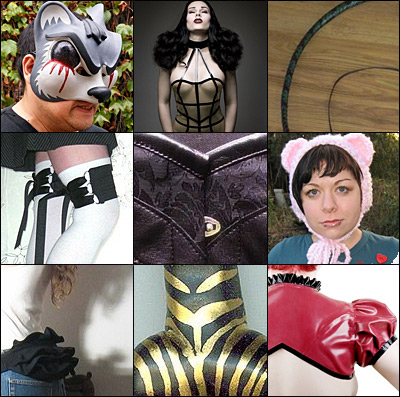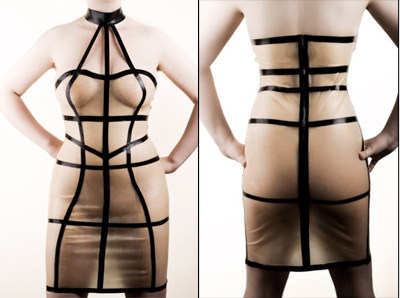
“taken”, Oil & graphite on wood 19×26, ‘Mayoi Michi’ @ Copro Nason
The work of 26-year-old painter Audrey Kawasaki, LA darling of the pop surrealist movement, always forces me into the persistent place between discomfort, cynicism and arousal.
On the one hand, her wood-panel paintings of languid, smooth and pale-skinned androgynous beauties are meticulously rendered with a sure hand and extreme eye for detail and aesthetic flow. The flawless pink and white skin of her sexy imaginary youngsters always seems to glow from within the image, the subjects look longing out with their impossibly big cartoon eyes as though they’re just aching to be touched, stroked, set free from their 2-D prison. The Art Nouveau-inspired flower, branch and seaweed forms that often surround the figures seems to undulate suggestively, giving the fantasy portraits a honey-slow-motion feel and matching soundtrack (in my head, anyway). I sort of want to go dunk my head in a bucket of icewater just thinking about the glistening parted lips and come-hither stares of her paintings. Ahem.
On the other hand, my intellectual mind can’t help leaping in to question the reactions of my lizard brain. Her style is incredibly consistent, almost to an obsessive degree; the figures she paints could all be related, and they all appear to exist in the same world, the same erotic melancholy state of waiting to be touched and taken. I am here in stasis, they say, I am waiting for you.
 “Kakure Zakura”, Oil & graphite on wood 20×15, ‘Innocents’ @ Lineage
“Kakure Zakura”, Oil & graphite on wood 20×15, ‘Innocents’ @ Lineage
This creeps me out a little, and my own attraction to women depicted this way creeps me out, too. It’s actually the imagining of women in this state of trapped accessibility that relates Kawasaki’s delicate fine art paintings to some of the most run-of-the-mill pornography, and this connection ups the titillation ante of her work. I always wonder what causes female artists to recreate images of trapped and helpless women in their art. Is it an expression of identification with that state? Of mastery over a culture that places women in that state? Is the eroticization of female helplessness a victory over or a capitulation to a patriarchal culture? I think I know Kawasaki’s answer, but I’m not sure.
Kawasaki is certainly intent on contributing to the collapse of the boundaries between high and low art and culture, erasing those boundaries between fine art and mass media, and strives to create work that is accessible, affordable and asks questions. Her work has seemed to take a darker, more serious turn of late and I look forward to seeing where she takes it.
Audrey Kawasaki’s solo show, Kakurenbu, is currently on at Mondo Bizzarro Gallery, Rome, Italy. It runs September 4 – October 3, 2008.
[Please welcome our newest guest blogger, Irene Kaoru. Irene is a designer, photographer, model, artist, and sculptor. Irene’s blog can be found here, and prints of her work can be found here.]























